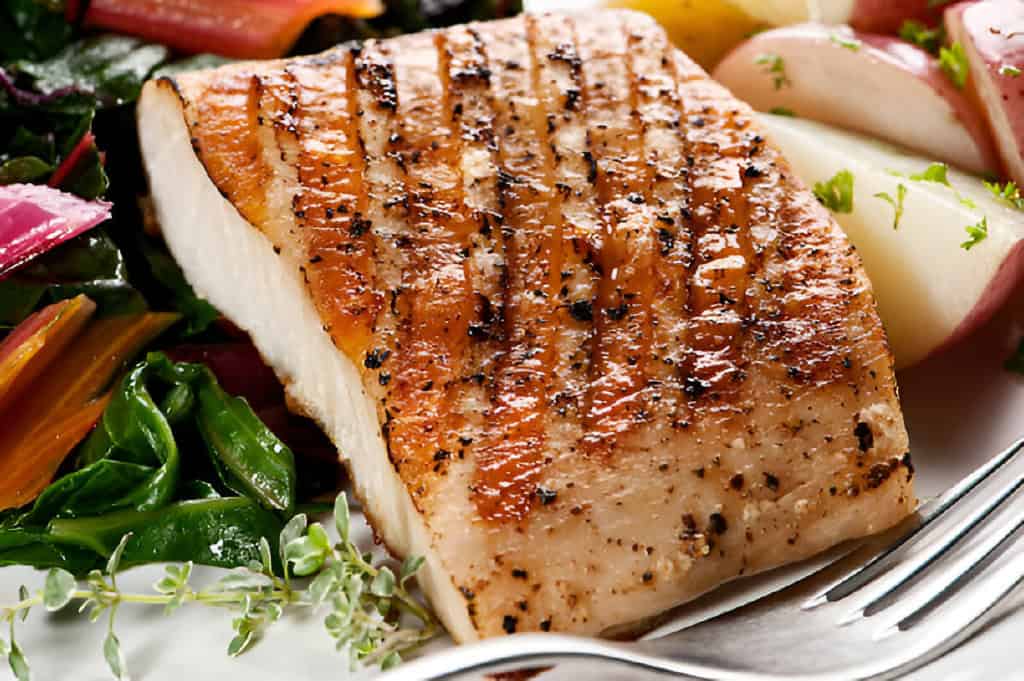Mahi Mahi vs. Salmon: Which Fish Offers the Best Flavor?

Have you ever wondered how mahi mahi compares to salmon in terms of taste? These two popular fish have distinct flavors. They can elevate your seafood dishes in unique ways.
In this article, we’ll explore the taste of mahi mahi and salmon. We’ll delve into their textures, flavors, and ideal ways to cook them. By the end of this read, you’ll see the differences between these two tasty fish. This will help you choose the perfect one for your next meal. Dive in to discover which fish will tantalize your taste buds and enhance your culinary creations.
Flavor Profiles: Mahi Mahi vs. Salmon
Mahi Mahi: Mahi Mahi, also known as dolphinfish, is prized for its mild, slightly sweet flavor. The flesh is lean and firm, with large flakes that make it a popular choice for grilling and broiling.
Its subtle taste pairs well with many seasonings and marinades. This makes it a great option for cooks who like to experiment with flavors. Mahi Mahi’s texture holds up well to high-heat cooking methods, resulting in a satisfying, meaty bite.
Salmon: Salmon, on the other hand, is known for its rich, buttery flavor and tender, flaky texture. The taste of Salmon can vary depending on the species and whether it is wild-caught or farmed. Wild-caught Salmon typically has a stronger, robust flavor. It is stronger than its farmed counterpart.
The high fat in Salmon makes it melt-in-your-mouth. This fat makes it a favorite for many types of cooking. These include raw dishes like sashimi and sushi and cooked ones like baked, poached, or pan-seared fillets.
Nutritional Content

Both Mahi Mahi and Salmon are excellent sources of protein and provide a range of essential nutrients. However, there are some differences in their nutritional profiles.
Mahi Mahi: Mahi Mahi is a lean fish, making it a great option for those looking to maintain a low-fat diet. It is rich in vitamins. They include B3 (niacin), B6, and B12. These are important for energy and for keeping the nervous and immune systems healthy.
Mahi Mahi also has selenium. Selenium supports antioxidants and thyroid health. Additionally, it gives lots of potassium. Potassium is crucial for heart health and muscle function.
Salmon: Salmon is famous for its high omega-3 content. It has many health benefits. These include reducing inflammation, supporting heart health, and improving brain function. It is also an excellent source of vitamins D and B12, as well as minerals such as selenium and potassium.
Salmon has more fat than Mahi Mahi, so it is more calorie-dense. But, the fat in Salmon is healthy and essential for well-being.
| Nutrient | Mahi Mahi (per 3 oz) | Salmon (per 3 oz) |
| Calories | 93 | 175 |
| Protein | 20 g | 19 g |
| Fat | 1 g | 10 g |
| Omega-3 | 0.1 g | 1.5 g |
| Selenium | 37 mcg | 27 mcg |
| Vitamin B12 | 1.2 mcg | 2.8 mcg |
| Potassium | 430 mg | 326 mg |
Cooking Methods
Mahi Mahi: Mahi Mahi’s firm texture makes it ideal for grilling, baking, and broiling. It holds up well to high heat and can be easily marinated to enhance its mild flavor. Popular preparations include Mahi Mahi tacos, grilled Mahi Mahi with tropical salsa, and baked Mahi Mahi with an herb crust. Its versatility allows it to be paired with a wide range of sauces and side dishes, from zesty citrus glazes to rich, creamy butter sauces.
Salmon: Salmon’s rich, fatty flesh lends itself to a variety of cooking methods. It can be grilled, baked, broiled, poached, or pan-seared, each method bringing out different aspects of its flavor and texture. Salmon is also commonly enjoyed raw in dishes like sushi and sashimi, where its fresh, buttery taste can shine.
Some popular recipes include honey-glazed baked Salmon. Also popular are cedar plank-grilled Salmon and Salmon en papillote. The latter is cooked on parchment paper with herbs and vegetables.
Mahi Mahi vs. Salmon: Which Fish Offers the Best Flavor?
When it comes to a direct taste comparison, personal preferences play a significant role. Mahi Mahi has a mild, slightly sweet flavor. It appeals to those who prefer a neutral taste. It can be easily complemented by seasonings and sauces. It offers a clean, light taste that is not overpowering, making it versatile for different culinary applications.
On the other hand, those who prefer a stronger taste adore salmon’s rich, buttery flavor. Salmon’s natural oiliness provides a luscious mouthfeel. Its distinct flavor stands out, even with simple preparations. Salmon’s versatility extends to raw dishes, where its texture and taste are appreciated in sushi and sashimi.
What Are the Best Substitutes for Mahi-Mahi?
When looking for the best substitutes for Mahi Mahi, consider fish with similar mild flavors. They should also have tender but firm textures. Cod is an excellent alternative, offering a slightly sweet taste and flaky texture that works well in various recipes.
Halibut, known for its dense, meaty flesh and subtle flavor, is another great option. Rainbow trout also fits the bill, providing a delicate flavor and tender texture that can easily replace Mahi Mahi in many dishes.
Additionally, white sea bass, with its mild flavor and firm, flaky texture, can be a suitable substitute. Salmon, although richer and more pronounced in taste, can still work as an alternative due to its versatile cooking properties.
Grouper, known for its lean, moist flesh and mild flavor, is another excellent choice. Lastly, fresh tuna, with its meaty texture and clean taste, can serve as a good substitute in recipes that call for Mahi Mahi.
What Is a Fish Similar to Salmon?
A fish similar to salmon is trout. Both trout and salmon belong to the same family, Salmonidae, and share a rich, slightly oily texture and a delicate, flavorful taste. Trout, like salmon, can be cooked in various ways, including grilling, baking, smoking, or even eating raw in dishes like sashimi. Rainbow trout, in particular, offers a mild flavor and tender flesh, making it a versatile substitute for salmon in many recipes.
Steelhead trout is often called a sea-run rainbow trout. It is another excellent alternative because it tastes similar and has a similar nutrition profile. Both fish are high in omega-3 fatty acids, essential for heart health, and they provide a good source of protein and vitamins.
You may prefer the subtle flavor of rainbow trout or the richer taste of steelhead. These fish can easily replace salmon in many recipes. They offer a delightful and healthy dining experience.
| Read: Fish Farming vs. Fish Stocking: What Is the Difference? |
Environmental Impact and Sustainability
When choosing between Mahi Mahi and Salmon, you must consider their impact on the environment. You must also consider their sustainability.
Mahi Mahi are often caught in the wild using methods like longline fishing. This can result in bycatch, including sea turtles and other non-target species. However, Mahi Mahi populations are generally considered healthy, and they grow quickly, making them relatively resilient to fishing pressures. To ensure sustainable practices, look for Mahi Mahi certified by organizations like the Marine Stewardship Council (MSC).
Salmon: Salmon’s sustainability varies. It depends on whether it is wild-caught or farmed. Wild-caught Salmon, particularly from well-managed fisheries in Alaska, is typically considered a sustainable choice. Farmed Salmon can have varying environmental impacts. These include issues about feed, disease, and waste. To make an eco-friendly choice, look for Salmon certified by organizations like the Aquaculture Stewardship Council (ASC) or the MSC.
Conclusion
The choice between Mahi Mahi and Salmon depends on your taste, nutrition goals, and cooking methods. Mahi Mahi offers a mild, adaptable flavor and a leaner nutritional profile, making it a fantastic option for those seeking a light, versatile fish. Salmon has a rich, buttery taste and lots of omega-3. It is great for those who like bold flavors and the health benefits of healthy fats.
Both Mahi Mahi and Salmon have their own unique strengths and can be enjoyed in a variety of delicious recipes. By understanding each fish’s traits, you can make an informed choice. It will best fit your taste and diet. You can choose the subtle sweetness of Mahi Mahi or the rich richness of Salmon. Both fish offer tasty meals and valuable nutrients.






